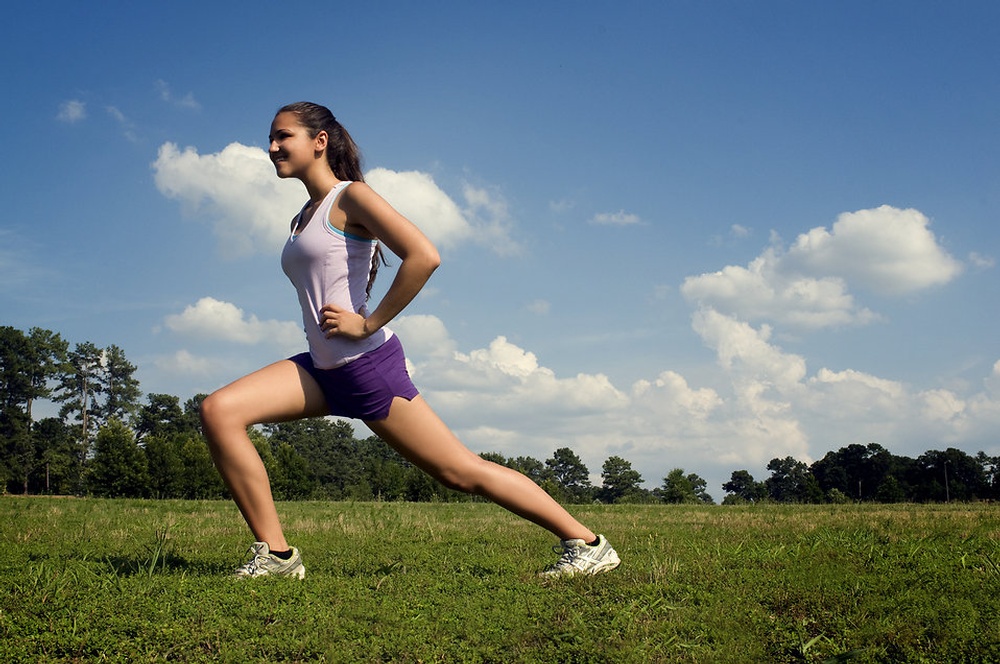When is it okay to perform static stretching?

Static stretching is when an individual muscle is stretched to its end point and held for 15-60 seconds. There is a long list of different stretches, many for each muscle group. Static stretching can increase muscle flexibility and joint range of motion.
Few debate that maintaining, in some cases improving flexibility is beneficial to athletic performance. Fewer still would argue that static stretching is a good way to accomplish it. The debate begins when we direct people to stretch prior to a workout or competition. Muscles stretched statically will remain “slack” where stiffness (or more accurately, muscle “recoil”) is reduced for up to an hour or more after an acute increase in flexibility. Purportedly, this negatively affects the muscles force producing ability, as moments during contraction are wasted “taking up slack” before contributing to force production. There is an abundance of support in the scientific literature for this belief. Additionally, this muscle may also be more susceptible to soft tissue injury; primarily in “explosive” sports (i.e. those requiring high amounts of speed or strength quickly, as in sprinting, jumping, and striking).
Other theories on why or how force production from stretched muscles is impaired included tissue damage from the stretching and neural inhibition. We won’t get into the details of these here but understand that these are viable theories with support in the scientific literature, though the exact reason for diminished force production is not fully understood. Nonetheless, even at the professional level, we still see athletes performing elaborate static stretching routines prior to practice and competition. The longstanding belief is that the stretching will help reduce the risk of a “pulled” muscle. However, evidence is mounting that the opposite may occur. For example: An athlete, in order to reduce injury and loosen up before a game, performs a stretch for his hamstrings 3x for 30s on each leg. According to the aforementioned theory, this athlete’s hamstrings will be “slack” for the next hour or so encompassing the competition where inevitability, this athlete will be called up to run or sprint at maximal speed. The braking effect of the hamstrings (a necessary and normal effect which occurs during sprinting), heavily dependent upon the stiffness of the hamstrings, will be diminished. With this decrease in force generation the hamstrings must also withstand high velocity forces from quadriceps and hip flexors. With impaired stiffness, this athlete is asking a lot, perhaps too much, from his hamstrings. Chances the hamstrings will fail and an injury will occur are actually greater in this example.
To muddy the water a bit more, some research has shown that the detriment to muscle stiffness following acute static stretching can be ameliorated if it is immediately followed by 10 minutes or more of dynamic activity, such as running. If farther research confirms this, it may not be helpful as many athletes simply do not have the time to warm-up, static stretch, and then do an additional session of dynamic activity, perhaps making this intervention unrealistic. It does however, add more ammunition to the debate. In addition to that, we have not addressed sporting activity that does not require high velocity or explosive actions. In endurance sports, such as running, where most of the muscle force production is submaximal and occurs in mid-range of the joint (not extremes) static stretching immediately before competition appears to have little effect on performance or injury reduction.
Of course, after static stretching, muscles will return to their normal length, the time for this varies but can range from 15 minutes to over and hour. With repeated stretching over time the length of the muscle increases. In this case we observe the more desirable chronic adaptation, where the length is increased yet the decrements in force production do not occur.
So, with all that said, when should an athlete include static stretching in his or her routine?
- For sports requiring large amounts of power and explosiveness, as most team sports (soccer, basketball, baseball, tennis, football, hockey), save the static stretching for after the workout or competition. Instead, simply focus on getting the muscles warm, including dynamic movements such as marching, jogging, hopping, running, twisting, and swinging or others that mimic game play.
- For athletes performing strength workouts, it’s probably a good idea to do the same, limit static stretching until after the workout. For a warm-up, some walking or jogging to get warm, then perform multi-joint strength exercises at a reduced intensity.
- For endurance athletes, such as runners, static stretching before a race or practice does not appear detrimental to performance. So if you are one of “those” athletes who go through a static stretching routine before a run, it seems you have nothing to fear, so continuing is probably fine.
Thanks for reading!
Looking for guidance in improving your athletic performance? Better yet, ready to make a change in your life? I help folks eat, move, and recover well, contact me here to set up a free consult!
Published by mattktraining
I am currently the Owner of my soloprenuerial company Matt K Training. Through my fitness and nutrition programs I help adults develop skills and practices that help them eat, move, and recover well. Over the past 20 years, in various roles such as a Personal trainer, Exercise Physiologist, Clinical Researcher, and Health Coach I have helped hundreds of adults reach their health and physical performance goals. When not working, I enjoy active pursuits such as playing right field for the Charlton Giants (in a 38+ competitive baseball league), playing tennis, hiking, backpacking, and rock climbing. I also enjoy indoor activities such as playing strategy board games, reading and discussing science fiction literature, dabbling with my guitar, finding creative ways to eat oatmeal, and being a good dad.